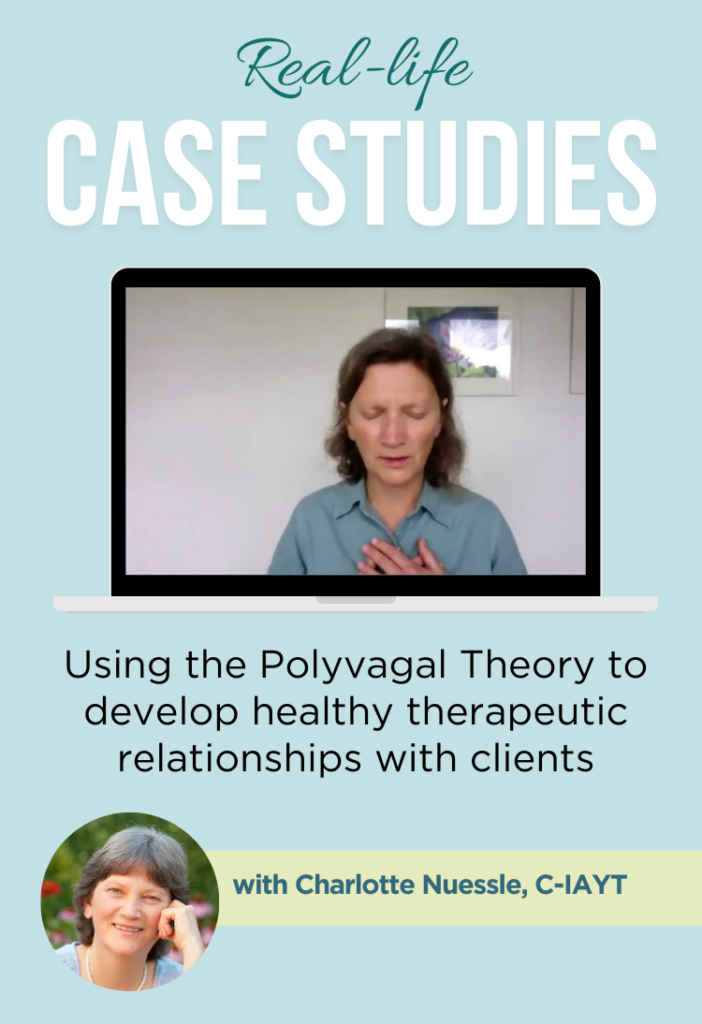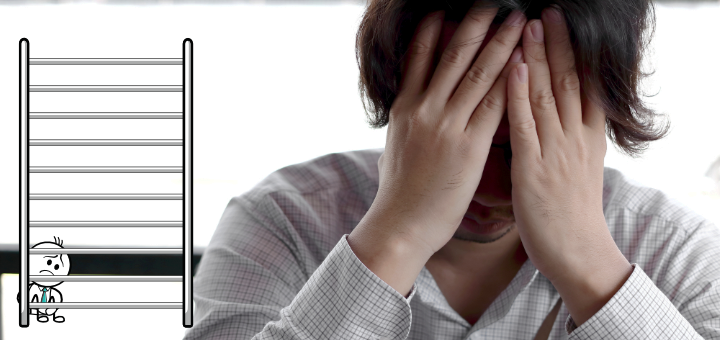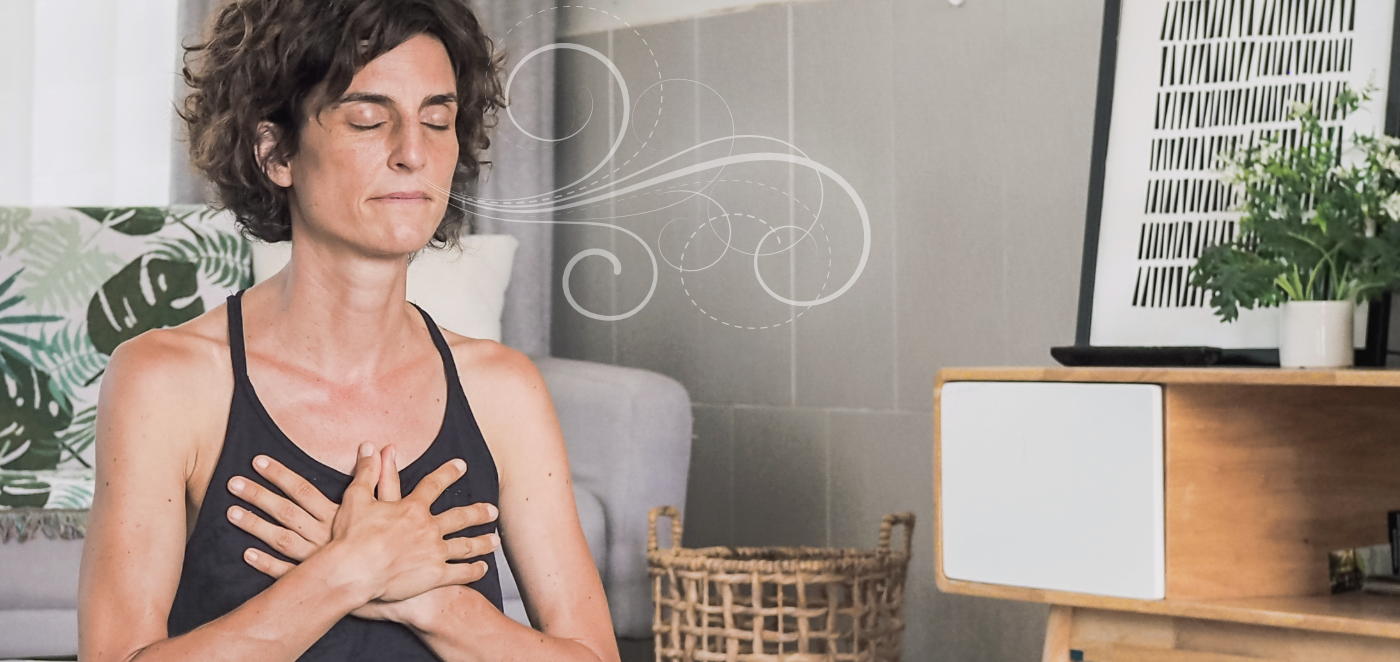What to do when we lose our balance during a session


Clients come to us seeking a regulating presence. We need to be regulated to support our clients in returning to balance. Yet all of us get dysregulated. The tone of our voice changes. We feel uncomfortable with the person we’re with. Harsh thoughts crowd out deeper wisdom. We can learn new ways to move back toward balance when we get dysregulated in a client session.
Self-awareness is key to recognize how and when we go out of self-regulation. When we know where we are in relation to our nervous system state, we have choices about how to respond to come back to regulation.
Most everyone has a home away from home, as Deb Dana calls it – a familiar place where the nervous system shifts into protection, fight-or-flight or shutting down. A protective response often feels rigid or stuck. The nervous system goes there quickly when it perceives a threat. The rigidity can be associated with trauma too. We’ll look at this more in upcoming posts.
As therapists, we aim to become more flexible in our nervous system responses, to move more fluidly up, out and through protective states toward balance.
Here are seven pointers to consider:
1. Normalize shifting states
Our nervous system shifts all the time to respond to the signals it’s taking in; it’s not a static system. It’s designed to automatically shift into protection to keep us safe and return to balance after the danger passes. Sometimes, we need to mobilize to get away from danger, to fight or flee. Other times, our system moves toward shutting down for survival.
Curiosity and creativity are cues of ventral vagal regulating energy. Getting curious about our state and stepping away from self-judgment strengthens our inner foundation. Then we can make new, genuine choices.
2. Remember that this happens to everybody
Each state has an important role to play in our survival. All of us move in and out of regulation. We can cultivate compassion as we observe how the nervous system shifts all day long in ourselves and invite our clients to get curious, too. Then we can learn to be more skillful in our responses.
3. Become aware of neuroception
Stephen Porges explained our nervous system’s innate intelligence with the term neuroception. The nervous system listens to messages coming from the world around us and from inside us and acts upon them without our conscious awareness. Through awareness of neuroception, we identify when we shift out of regulation into a protective response.
In Kriya Yoga terms, we can bring svadhyaya (self-study) to the practice of neuroception.
4. Name it
Naming how our system gets dysregulated and returns to regulation, gives us a language to observe its shifts. Deb Dana offers the Notice and Name Practice.
Two examples that stand out for me are overthinking and feeling invisible. Overthinking is when thinking becomes ruminating. It feels like I’m on a treadmill, going around and around but not getting anywhere. Feeling driven to keep thinking things through, yet never arriving at a solution. This can be a signal of fight-or-flight.
Feeling invisible can trigger collapse. Old limiting beliefs often accompany the collapse of dorsal vagal shut down, sending the message: “I’m not good enough.”
Name some of the ways your system becomes dysregulated. When we understand that this was the nervous system’s attempt to protect us, we can extend compassion to ourselves.
5. Have a simple plan for times your nervous system gets triggered in a session
Here are some ideas:
- Take a moment to settle or ask for a minute to settle and check in together.
- Come back to your own body.
- Be aware of self-judgment. Am I being too hard on myself? On my client?
- Offer yourself compassion.
- Sense which protective response is getting triggered; respond in a simple way to create enough safety to start a shift.
- Acknowledge to the client when you’re in a protective response: “My nervous system has been struggling with my recent move. Just letting you know in case you pick up any cues from me. It’s me. Not you.”
- Note anything that you need to reflect on more. Come back to it after the session.
6. Make a list of three things to do in daily life
Help your system create new pathways to move back into rhythm toward balance. Think little and often. Create and post a list of three things to do in daily life that support your nervous system shifting toward balance, super simple things like drinking a cup of tea, getting in nature, a short yoga practice, or calling a friend. Refer to the list when your system gets pulled into a protective response. Experiment with how your system responds, listen to what it needs.
7. Beware rigid prescriptions
Practices of the yoga tradition can support self-regulation. Yet those same practices might trigger a client’s trauma. It’s important to discover together with our client what actually serves them in the moment. We need to be humble and let go of our beliefs about what might benefit our client. Be open to a journey with them, step into the unknown, offer a safe connection.
It’s interesting to note where we’re rigid in our own lives and offer ourselves self-kindness.
Getting dys-regulated takes on different nuances for each of us. By recognizing how our nervous system responds to danger to keep us safe, we can start to identify where we are. Being kind to ourselves when our state shifts into protection supports us in getting curious.
Everyone goes in and out of regulation. Have a simple plan for ways to come back to regulation in daily life and another for client sessions. Aim to create more fluid movement up and out and through protective states and back to balance.
Read more of Charlotte’s posts on using the Polyvagal Theory >
Check out Charlotte’s Real-Life Case Studies video series, available exclusively to Sequence Wiz members. Learn more about Case Studies at Sequence Wiz >)

Part 1: Looking for cues from the client’s nervous system
Part 2: Embodying non-linear movements from nature to come out of protective stress response
Part 3: Using caring touch to reconnect with the body and accept what is
Part 4: Choosing the right amount of effort when dealing with the shut down response
Part 5: The importance of cultivating a regulating presence for our students
About Charlotte
Charlotte Nuessle is a C-IAYT, with BSc in gerontology. She had dedicated almost twenty years to service at Kripalu Center and had offered adaptive yoga/body-based & mindfulness practices in senior living communities. Charlotte specializes in working with students who are dealing with issues around age, illness, grief, and death. She’s informed by three wisdom approaches: yoga therapy, resilience, and understanding our human nervous system through polyvagal theory.

Further reading:
- Deb Dana, Polyvagal Exercises for Safety and Connection: 50 Client-Centered Practices (affiliate link)
- Kristin Neff, Self-Compassion Exercises








